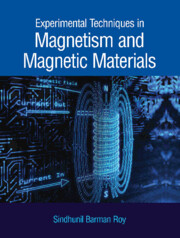Book contents
- Frontmatter
- Dedication
- Contents
- Preface
- I Introduction to Magnetism and Magnetic Materials
- II Basic Phenomenology of Magnetism
- III Experimental Techniques in Magnetism
- Appendix A Magnetic Fields and Their Generation
- Appendix B Units in Magnetism
- Appendix C Demagnetization Field and Demagnetization Factor
- Index
II - Basic Phenomenology of Magnetism
Published online by Cambridge University Press: 27 October 2022
- Frontmatter
- Dedication
- Contents
- Preface
- I Introduction to Magnetism and Magnetic Materials
- II Basic Phenomenology of Magnetism
- III Experimental Techniques in Magnetism
- Appendix A Magnetic Fields and Their Generation
- Appendix B Units in Magnetism
- Appendix C Demagnetization Field and Demagnetization Factor
- Index
Summary
The magnetic properties in solids originate mainly from the magnetic moments associated with electrons. The nuclei in solids also carry a magnetic moment. That, however, varies from isotope to isotope of an element. The nuclear magnetic moment is zero for a nucleus with even numbers of protons and neutrons in its ground state. The nuclei can have a non-zero magnetic moment if there are odd numbers of either or both neutrons and protons. However, the magnetic moment of a nucleus is three orders of magnitude less than that of the electron.
The microscopic theory of magnetism is based on the quantum mechanics of electronic angular momentum, which has two distinct sources: orbital motion and the intrinsic property of electron spin [1]. The spin and orbital motion of electrons are coupled by the spin–orbit interaction. The magnetism observed in various materials can be fundamentally different depending on whether the electrons are free to move within the material (such as conduction electrons in metals) or are localized on the ion cores. In a magnetic field, bound electrons undergo Larmor precession, whereas free electrons follow cyclotron orbits. The free-electron model is usually a starting point for the discussion of magnetism in metals. This leads to temperature-independent Pauli paramagnetism and Landau diamagnetism. This is the case with noble metals and alkali metals. On the other hand, localized non-interacting electrons in 3d-transition metals, 4f-rare earth elements, 5f-actinide elements, and their alloys and intermetallic compounds with incompletely filled inner shells exhibit Curie paramagnetism. Many transition metal-based insulating oxide and sulfide compounds also show Curie paramagnetism. In the presence of magnetic interactions, many such systems eventually develop long-range magnetic order if the magnetic interaction can overcome thermal fluctuations in some temperature regimes.
Against the above backdrop, in the next three chapters, we will introduce the readers to the basic phenomenology of magnetism, concentrating mainly on solid materials with some electrons localized on the ion cores. There are some excellent textbooks available on the subject, including those by J. M. D. Coey [1], B. D. Cullity and C. D. Graham [2], D. Jiles [3], S. J. Blundell [4], and N. W. Ashcroft and N. D. Mermin [5].
- Type
- Chapter
- Information
- Publisher: Cambridge University PressPrint publication year: 2023

